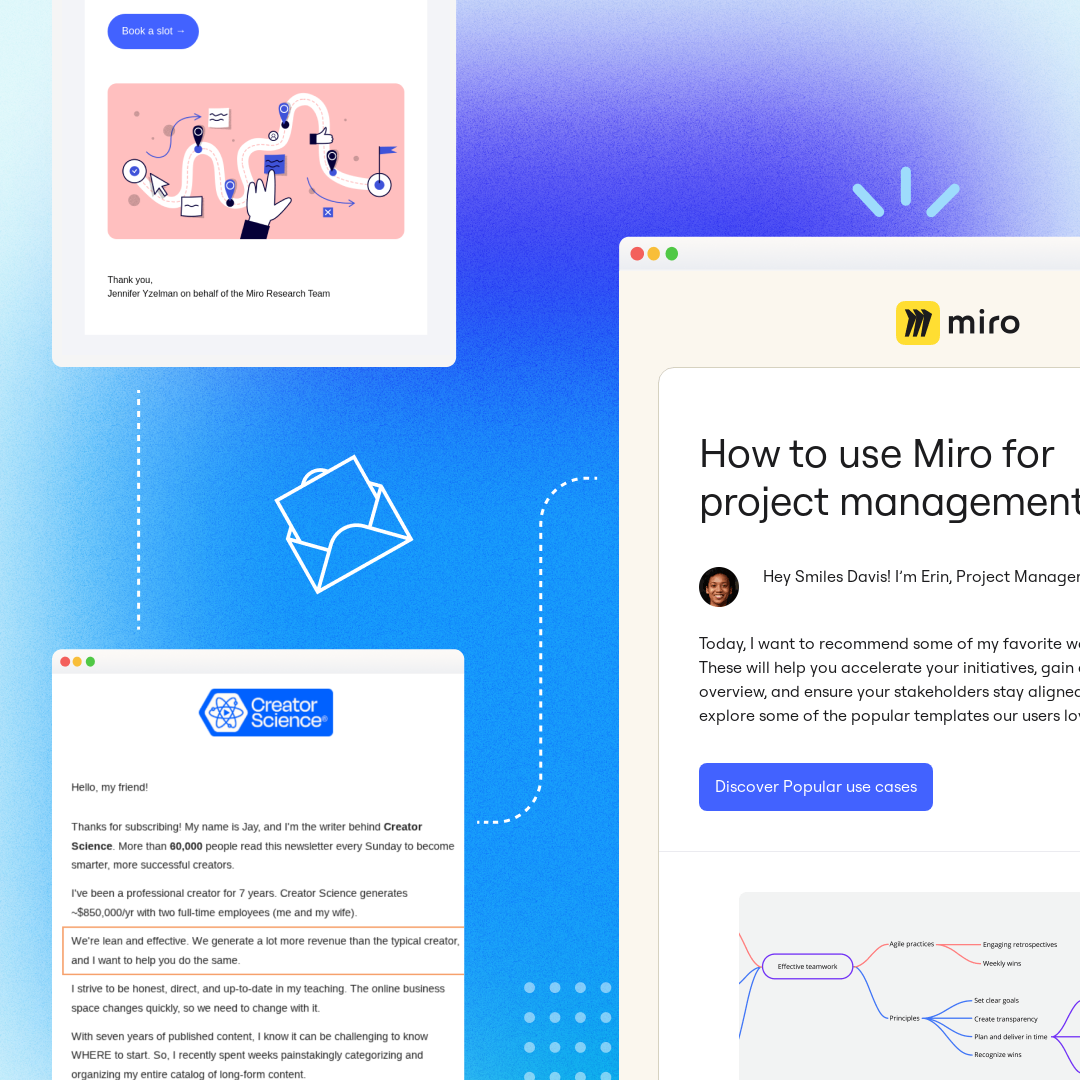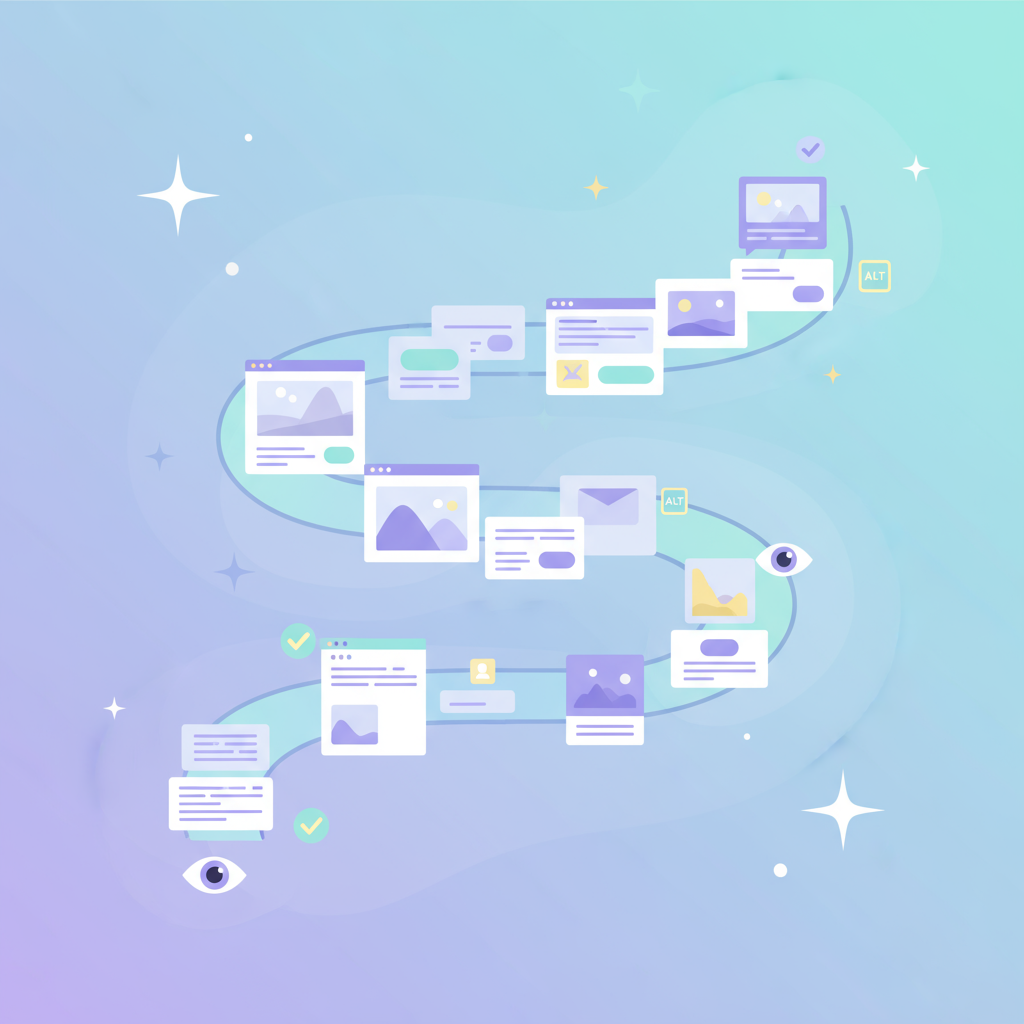
Today, digital interactions dominate, and gamification has emerged as a powerful tool to capture and maintain audience attention. More than 70% of businesses included in the Global 2000 have adopted gamification as a key strategy.
In this article, we'll explore the significance of gamification in email marketing, understand its core concepts, delve into the psychology behind it, and provide insights on implementing and overcoming challenges in your gamified campaigns.
The psychology behind gamification in email
At its core, gamification in email marketing revolves around incorporating game-like elements to enhance user engagement.
This strategy involves understanding human behavior and motivation and leverages the psychological aspects that make games inherently appealing, such as competition, achievement, and rewards. Together, these insights help email marketers determine the best use of gamification to help drive engagement and shape consumer responses.
Here are the 3 key psychological drivers in gamification:
Intrinsic motivation
Gamification triggers users' desire to participate by incorporating challenges, rewards, and competitions. As a result, this creates a sense of achievement in users brought on by the idea of "winning" and reinforces positive engagement.
Operant conditioning
By strategically designing gamified elements that reward specific actions, marketers create a positive association between user engagement and valuable incentives. This conditioning strengthens the likelihood of users repeating desired behaviors, establishing a cycle of ongoing engagement.
Cognitive biases
Leveraging cognitive biases like scarcity bias allows marketers to prompt quicker responses by offering exclusive rewards or limited-time promotions.
In short, by appealing to individuals' inherent need for achievement and recognition, gamification becomes a powerful tool for capturing and maintaining their attention.
How to use gamification in email marketing
The concept of rewards and incentives helps amplifies the gamification strategy. Offering tangible benefits like exclusive discounts or access entices users to not only engage with emails but also to seek out additional interactions. Let's delve deeper into how you can use gamification to create a competitive edge and engage users in your next email campaign:
- Points, Badges, and Leaderboards: Creating a competitive edge by rewarding users with points, badges, or leaderboard positions based on their interactions with your emails. This not only helps promote a feeling of accomplishment in users, but also helps foster a sense of community and competitiveness that leads them to climb leaderboards and stand out.
- Rewards and Incentives: Offering tangible benefits such as discounts, exclusive access, or special promotions to incentivize user participation. This exclusivity makes users feel valued and special, fostering a stronger connection with your brand.
- Interactive Elements: Enhancing user experience by introducing interactive features like quizzes, polls, or challenges within email content. These elements not only enhances engagement but also provides valuable insights into customer preferences, helping you tailor future content and offerings.
By tapping into users' motivations, whether it be competition, a desire for recognition, or the pursuit of exclusive benefits, you can create dynamic emails that help build a loyal and active audience for your brand.
Benefits of gamification in email marketing
Gamification transforms the user experience from a passive act of scrolling through emails into an interactive and dynamic journey where each click or purchase brings them closer to a tangible reward.
Increased customer engagement:
By turning the email experience into a game-like, subscribers are encouraged to engage with the content, spending more time exploring and interacting with the messages. This heightened engagement not only improves the chances of users absorbing the information presented but also creates a memorable and enjoyable experience, setting the brand apart in the minds of the recipients.
Enhanced brand loyalty:
One of the significant benefits of gamification is its ability to create deeper connections between a brand and its audience. When users consistently engage with gamified email content, they become active participants in a brand experience, leading to stronger brand-customer relationships and increased loyalty.
Higher conversion rates:
Gamification can be a powerful motivator for users to take desired actions. Whether purchasing, sharing content, or subscribing to newsletters, the gamified elements provide incentives and rewards for these actions. This motivational aspect drives increased participation, as users are more inclined to interact with emails, complete tasks, and actively engage with the brand, contributing to a more dynamic and participatory audience.
Improved data collection and analytics:
Gamification allows valuable user data collection through interactions and participation. Users willingly provide information while engaging with challenges, quizzes, or other gamified elements. This enriches your customer database and provides insights into user preferences and behavior. Improved analytics enable marketers to tailor future campaigns based on a better understanding of their audience.
5 Best practices for using gamification in email marketing
Embarking on a successful gamified email marketing campaign requires meticulous planning and strategic considerations. The following strategies and tactics can transform your email campaigns into immersive and rewarding journeys, making a lasting impression on your audience and optimizing your marketing efforts.
- Define campaign objectives: Clearly outline the goals of your gamified campaign to align with your overall marketing strategy. Use data-driven insights to identify the objectives and strategy for your emails. This means regularly tracking key metrics such as open rates and click-through rates. Once your campaigns launch, assess the effectiveness of your gamification elements to refine future campaigns.
- Identify target audience: Personalization is key to creating a more engaging experience. Understand your audience's preferences and tailor gamification elements to their interests. By leveraging data and what you know about your unique audiences, you can create better segmented gamified content that tailors to individual preferences. This includes personalizing challenges, rewards, and interactions, making the entire experience more relevant and appealing to different audiences.
- Choose appropriate gamification elements: Select elements that resonate with your brand and align with customer preferences. Ensure rewards align with audience interests. Go beyond generic incentives by offering enticing and meaningful rewards such as exclusive discounts, early access, or special promotions. It is crucial to adhere to data protection laws, like GDPR and CCPA, in your gamification practices. Communicate clearly how user data will be used and ensure compliance to build trust with your audience.
- Integrate gamification into email design: Ensure a smooth transition to gamified content for an intuitive and enjoyable experience. This means visually appealing emails with a user-friendly interface that offers a seamless transition from the email to the gamified elements.
- Develop clear calls-to-action (CTAs): Encourage user participation by crafting compelling CTAs that drive desired actions. Clearly communicate what action you want the user to take and highlight the benefits of doing so. Whether it's clicking a link, participating in a challenge, or making a purchase, the CTA should be persuasive and aligned with the gamification goals.
Overcoming challenges in gamified email marketing
When using gamification in email, it is important to find the right balance between gamification elements and the core message of the email. It's essential to integrate gamified features seamlessly without overwhelming or distracting recipients from the primary content. This lack of harmony brings forth two main challenges:
User fatigue
With the increasing use of gamification in various digital platforms, users risk experiencing fatigue or disinterest in engaging with gamified content. If not managed carefully, this fatigue can decrease overall participation and effectiveness.
Mitigation Strategy: To counter this, marketers should introduce variety and novelty in gamified content, keeping users engaged with fresh challenges and incentives. A/B testing is a great way to experiment with different gamification elements to identify what resonates best with your specific audience.
Lack of brand recognition
Maintaining consistency and alignment with your brand image while implementing gamification can be challenging. If gamified elements feel disconnected or misaligned with your brand identity, it may create confusion or a lack of authenticity among your audience.
Mitigation Strategy: Regularly analyze performance metrics and gather user insight to continuously improve your gamification strategy. Actively seeking insights from your audience about their preferences and perceptions allows you to adapt and iterate on your gamified content.
Unleashing the power of email gamification with Beefree
In an era where consumer attention is a prized commodity, the integration of gamification has emerged as a dynamic strategy to captivate and engage audiences within the realm of email marketing. It's important to remember that the essence of success in this area is rooted in persistent experimentation and creative thinking. Embrace the opportunity to try fresh gamification techniques in your email campaigns to maintain a competitive edge.
No-code solutions like Beefree simplify this process by providing an intuitive and user-friendly solution that empower marketers to seamlessly incorporate interactive and gamified elements into their email designs.
So, create a free account and start infusing some fun and interactivity into your email marketing efforts. Here's to the exciting gamification journey – may it bring you great results and enjoyment!



